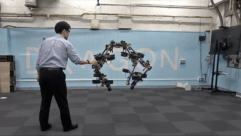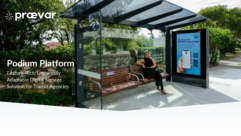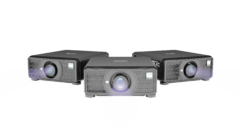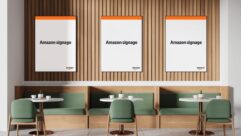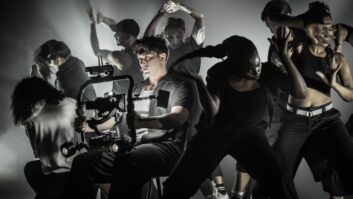
Digital Signage at Candlestick Park, Part 1
May 8, 2012 11:46 AM,
With Bennett Liles
Listen to the Podcasts
Editor’s note: For your convenience, this transcription of the podcast includes timestamps. If you are listening to the podcast and reading its accompanying transcription, you can use the timestamps to jump to any part of the audio podcast by simply dragging the slider on the podcast to the time indicated in the transcription.

Ping HD installed dozens of large menu monitors throughout the concession areas of San Francisco’s Candlestick Park.
San Francisco’s famous Candlestick Park needed a system to deliver HDMI video to dozens of different monitors displaying food and beverage menu’s to thousands of football fans. They called in Ping HD for the job and Kevin Goldsmith is here to give us all the details coming up next on the SVC Podcast.
Kevin, it’s great to have you with me here on the SVC Podcast from Ping HD in Denver and we’re going to be talking about the big digital signage project at San Francisco’s Candlestick Park but first tell me a little about Ping HD.
Yes, we did—well at Ping HD we’re a full service digital media company so from start to finish we provide complete turnkey solution for digital media in any form. So that could be digital signage, it could be for digital mania boards, way finding, advertising but even audio and that could be profiled licensed music. We operate across multiple verticals including sports and entertainment but also retail, education, hospitality, the corporate sector, transport and government. [Timestamp: 1:33]
OK, well it sounds like you have a lot going on.
Yeah, we sure do.

And this project looks like it was a pretty massive one. How does this job compare in size to what you normally do? Was this a big deal or was it pretty much the normal thing that Ping HD gets into?
Well, with regard to sports and entertainment the project is fairly typical in terms of like for like. Some are bigger some are smaller and that said, we’ve been involved in small projects that literally have been just a single screen and media player right away through to stadium wide installations of 256 screens plus. [Timestamp: 2:07]
OK and Candlestick Park has been there since the late Stone Age. I am sure you have a lot of legacy design in there not built for modern media. I’m not sure how big a problem that was. What exactly did they want on this thing? What exactly was Ping HD charged with doing at Candlestick Park?
Well, really they wanted to introduce digital menu boards and that was really quite exciting because they understand the value of putting digital menu boards in there concessions even though, as I am sure you’re aware, they’re actually breaking ground I think in the next week or two of building a new stadium so with that in mind they decided to take that investment on and it’s working very well for them. With regards to the project, we added 62 commercial displays but we also utilized 40 existing televisions that they historically used for showing a live game and in some instances they still were some of those older televisions that they do just that. We then added 40 media players. So we got 40 media players in total driving content on 102 screens. In some instances we’re driving one screen to one media player but also two screens from one media player using Atlona HDMI cables and media distribution amplifiers. The media players themselves, they’re connected to the stadium Wi-Fi network using enterprise grade USP Wi-Fi adapters that enables us to get a good solid and robust connection out to the web and that’s important because we deliver our solution as a web based software-as-a-service solution. [Timestamp: 3:37]
Right so you can get to it from anywhere and make changes and this was to replace a whole multitude of static printed signs.
That’s right, yes so obviously with digital these guys can quickly change content based on event and product availability but also bring in full motion video to ticker information and these guys also use it to communicate with their fans, for stadium wide safety, they work on a basis there’s 80,000 pairs of eyes if you see anything tell somebody. So it’s really beyond just providing digital menu content its adding additional value. [Timestamp: 4:14]
And you have to be able to have pretty high resolution to allow some of the fine print to be read at some distance on these menus so you’re basically taking that one high def signal and sending it out to a whole bunch of monitors. Now HDMI can be kind of finicky so why did you decide to go with the Atlona HDMI and distribution amplifiers and the other Atlona gear? Have you used that before?
Yes, we have and obviously that’s a driving reason why we selected Atlona again. We first used Atlona at the Edward Jones Dome where the St. Louis Rams play football. We’ve got 256 digital menu boards and 20 large format digital posters in St. Louis there. So that equipment has been installed for about three years now and it’s proved to be reliable. So basically it was sticking with a product that we know works and won’t cause us any problems. [Timestamp: 5:04]
Digital Signage at Candlestick Park, Part 1
May 8, 2012 11:46 AM,
With Bennett Liles

And I think that was the AT-HD-V12 distribution amps?
Yeah.
And those are 1×2, right?
That’s correct.
And the HDSync, what were those EDID emulators?
Yes we did those as well and a combination of long HDMI cables running up to 50ft. [Timestamp: 5:23]
HDMI obviously doesn’t like to normally go a long way without some sort of extenders in the line or cascaded DA’s or something so were there any special tricks or gear you had to use for long cable runs?
No, but we have in the past had a few problems obviously the distance of 50 ft. on HDMI is fine. We’ve not had any issues with that but when you run these cables through some really small nooks and crannies that you have to fish through we’ve found that where we’ve tried cheaper HDMI cables in the past they usually get damaged when over bent and they become unusable so if you can imagine all those little wires in the cable if you bend it too far it can break inside and the cable’s useless. [Timestamp: 6:08]
And you don’t know that until after you’ve done a lot of work and tried to put a signal through it and then find you’ve got to do something over.
That’s right, sure have.
Now with the stadium situation, that must have been kind of interesting at times at trying to get to some places where you’ve got to pull HDMI cable through it’s not exactly like pulling a piece of rope through—I think we’re hung on something so you just pull harder.
That’s right.
It can take more people along the line to substitute for being able to use any brute force.
It certainly can be a time consuming exercise that’s for sure. [Timestamp: 6:37]
Now what was the most frequent problem in dealing with HDMI signals to that many simultaneous monitors? I know you had to be able to keep all the monitors and the displays awake since with menus there’s not much video activity going on.
That’s right, a common problem there is where the slate screens just can’t detect the signal and it obviously keeps putting it into standby mode so obviously Hot Plug five volts is a definitely an issue there but with the Atlona equipment we can maintain that five volts which prevents that issue. [Timestamp: 7:07]
And these I take it are strictly read by the crowd there’s no touch screen interactivity going on.
No, this is a complete passive based network. Obviously through the content we can incorporate interaction with social networking like Twitter. We can also generate QR codes as well but also through SMS marketing campaigns and so on we can put content out there that enables the fans to participate in competitions and so on through sending an answer or a key word through a five digit SMS code. [Timestamp: 7:40]
That’s a very big place and there was a lot of ground to cover. What was the timeframe on the job? They have a lot of events going on at Candlestick. Did you have to squeeze this in between other things?
Well it was quite lucky really and mostly one thing I’ve noticed about doing stadium installations is you certainly keep fit because walking throughout the concourses from one concession to another concession can be long way but the installation itself, we did that in July 2011 and it took just the one week and luckily it was kind of before football season there were no other events like concerts and so on so we had the luxury of getting that done without the need to work around anything. So basically from when we got a signed contract to go ahead and get the solution implemented the project was delivered within about an eight week period. So we moved fairly quickly on that. [Timestamp: 8:26]
Well, that’s not too bad. I guess when you get into a big stadium like that and it’s just you and your guys around and nobody else it would seem to be sort of a lonely looking place.
It sure can and a bit cold as well with the breeze blowing in off the bay. [Timestamp: 8:40]
That’s right, the stadium is known for strange wind and air currents coming off the bay and doing funny things with flying footballs during the games. I really appreciate your being here Kevin for part one, Kevin Goldsmith from Ping HD in Denver and we’ll be getting together for programming and testing the Candlestick signage system. Thanks for being with us.
You’re welcome. Thank you.


